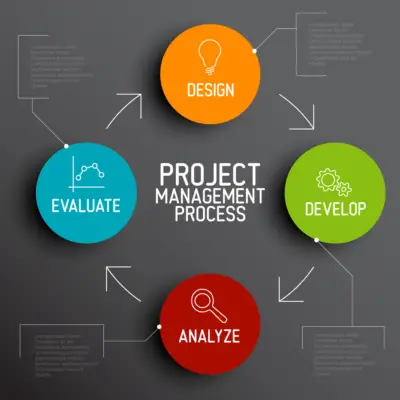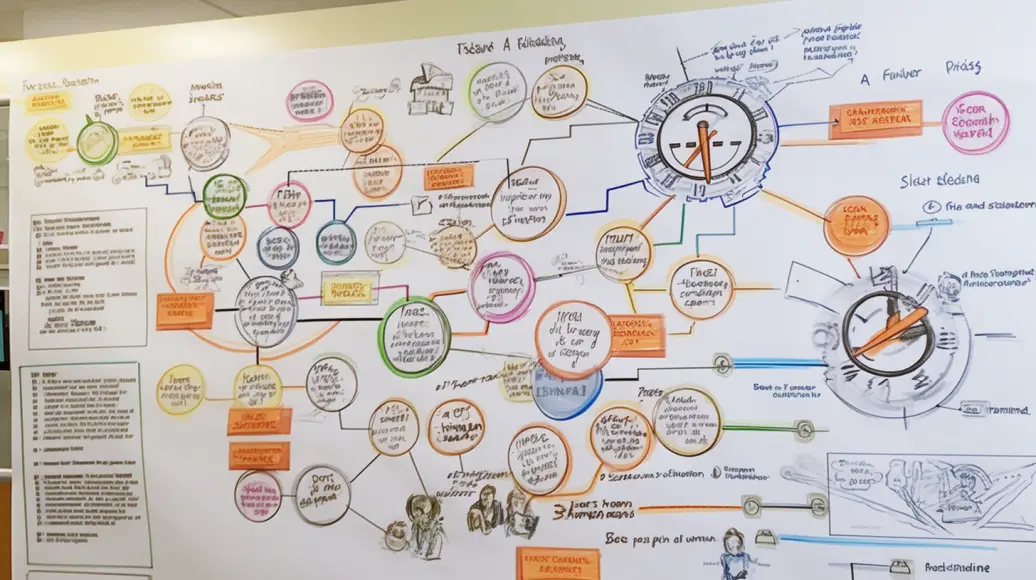Project risk management is an important part of any IT development project. It helps to identify potential risks and put measures in place to mitigate them. Identifying and measuring these risks is key to successful project execution.
In this article, we’ll explore the key project risk indicators (KRIs) that can be used to assess the impact of risks on a project accurately.
We’ll also discuss the best practices to help manage these risks and ensure successful project execution.
Examples of Key Project Risk Indicators
Key Risk Indicators (KRIs) are critical predictors of unfavourable events that can adversely impact a project’s objectives. They help to identify potential risks early in the process, allowing project managers to take preventative measures. Examples include:-
Schedule Variance: This is the difference between the planned schedule and the project’s actual progress. A significant variance may indicate potential risks related to time management.
Cost Variance: Similar to schedule variance, cost variance is the difference between the budgeted cost of the project and the actual cost. A high-cost variance could indicate financial risks.
Scope Creep refers to uncontrolled changes or continuous growth in a project’s scope. This can happen when the scope of a project is not accurately defined, documented, or controlled.
Resource Availability: The lack of necessary resources (human, material, or financial) can pose a significant risk to the project’s completion.
Stakeholder Engagement: If key stakeholders are not adequately engaged, their lack of support can pose a risk to the project.
Quality of Deliverables: If the project’s deliverables consistently fail to meet the set quality standards, it could indicate a risk.
Project Complexity: The higher the complexity of a project, the higher the risk. Complexity can come from many factors, including the project’s size, technological novelty, and the organizational environment.
Dependency Risks: These are risks associated with reliance on external factors or third parties. For example, if a project relies on a single supplier for a critical component, any disruption to that supplier could pose a risk to the project.
Regulatory and Compliance Risks: These are risks associated with failing to comply with laws and regulations. If a project is found to be in violation, it could face fines and legal action or be forced to cease operations.
Technological Risks: These are risks associated with using technology in a project. For example, software bugs, hardware failures, or cybersecurity threats.

Identifying Risks
It’s important to create a thorough list of key risk indicators in a 360-degree view to identify all potential risks. In order to create a list of project key risk indicators, it’s necessary to have a focused thought process and to consider the potential risks associated with the project.
It’s also important to consider the potential risks associated with the project environment, customer requirements, and project deliverables. Project key risk indicators should be identified to help management develop effective risk mitigation plans.
Finally, ensuring the project team is prepared to identify, monitor, and mitigate risks throughout the project life cycle is important. Carefully considering key risk indicators and developing a proactive risk management plan, projects can be managed more effectively and the chances of project disasters can be reduced significantly.
KRIs in IT Development Projects
Knowing your Key Risk Indicators in IT Development Projects is essential for successful project management and avoiding costly disasters. As such, it’s important to be aware of the following key indicators:
- Project KRIs: These measure how risky an activity will be in the future and are critical for monitoring and controlling project risks.
- Cyber Insurance Plan: This is a must-have for any IT project, as it protects your project against potential cyber-attacks and other security risks.
- Metadata Management: This is essential for understanding the structure, content, and context of data stored within a project and is necessary for adhering to GDPR standards.
Project managers must proactively identify potential risks and implement appropriate risk mitigation plans. This can be done by setting up a system for monitoring and controlling project risks, including adopting KPIs and KRIs and developing a cyber insurance plan.
Additionally, proactive data management practices should be implemented to ensure GDPR compliance. By taking these steps, organizations can ensure that projects are completed on time and within budget and minimize potential risks.
Metrics for Measuring Impact
To effectively manage project risks, measuring the impact of potential risks through metrics is important.
These indicators are important tools within the Project Risk Management Practice Area, helping to monitor and control risks. KRIs are not just limited to IT Development Projects but play an even more vital role in these areas.
They provide project managers with the necessary information to create effective risk mitigation plans. For instance, with data from KRIs, it’s possible to assess the potential impact of a project delay and create a risk mitigation plan to prevent such an event.
Additionally, Key Risk Indicators can be used to measure the success of current risk mitigation plans. Monitoring and analyzing KRIs over time can provide project managers with valuable insight into potential risks and help them make better decisions in the future.
KRIs should be tailored to each project and regularly monitored to ensure the most successful project outcome.
Projects and Consequences
As project managers, it is essential that we recognize the impact of the projects we are managing. We need to be aware of the consequences associated with each project and how they may affect the project’s success.
To help visualize the implications of project management risk, we created a three-column and five-row table to demonstrate the risks and their associated consequences.
The first column is labelled “Risk Factors“. This column includes the various risks associated with a project such as budget constraints, lack of understanding of the project scope, or lack of executive buy-in.
The second column is labelled “Consequences”. This column includes the various consequences of risk factors such as project delays, cost overruns, and quality issues. The third column is labelled “Mitigation”. This column includes the different ways to mitigate the risks associated with the project.
Understanding the potential risks and their associated consequences is important to manage the project properly. This table provides a visual representation of the risks and their potential consequences.
Being aware of the risks and their potential consequences, project managers can develop a mitigation plan to reduce the risk of the project failing. Understanding the consequences of projects is key to managing project risks and ensuring success.

Leading Practices to Mitigate
We recognize the importance of mitigating project risks and the associated consequences for successful project delivery. We must analyze and identify key project risk indicators to ensure our risk mitigation plans are effective.
Here are five key risk indicators for successful project management:
- A well-developed project management strategy and a plan agreed upon by all parties involved.
- A steering or executive committee to provide guidance and oversight.
- Project metrics and performance objectives are monitored and managed.
- A collaborative environment for communication and collaboration between team members, stakeholders, and business units.
- Sufficient technical expertise on the project team.
Understanding the key risk indicators, organizations can take proactive steps to reduce the risk of project failure, increase the likelihood of success, and improve the overall project delivery experience.
Frequently Asked Questions
What is the best way to identify all potential risks in a project?
We recommend proactively assessing all potential risks in a project by utilizing project KRIs (Key Risk Indicators), metrics to measure the likelihood of an adverse event, and risk mitigation plans.
How can KRIs help management come up with effective risk mitigation plans?
By identifying Key Risk Indicators, we can help management develop effective risk mitigation plans based on data-driven analysis. This allows us to proactively identify and manage potential risks, minimizing them and avoiding project disasters.
What is the best way to measure the impact of project risk?
We measure the impact of a project risk by utilizing Key Risk Indicators (KRIs) to identify and measure the likelihood and consequences of an adverse event. KRIs help us create effective mitigation plans.
What are the most effective ways to mitigate project risks?
We strive to identify and mitigate project risks through proactive risk management strategies. This includes defining Key Risk Indicators, implementing robust monitoring and control tools, and developing effective risk mitigation plans.
risk mitigation plans>Are there any special considerations for IT development projects when assessing project risk?
Yes, IT development projects require special considerations when assessing project risk. We must consider the potential security risks associated with the project, the impact of GDPR regulations, and any metadata or personal data stored in ERP or CRM systems.

Conclusion
We’ve explored the importance of project risk management in IT Development Projects and identified key indicators to help organizations identify and mitigate potential risks.
We’ve also discussed the metrics for measuring the impact of risks and the leading practices to mitigate them.
Understanding the need for timely identification of risks and the available tools and techniques, organizations can ensure successful project execution.
Ultimately, thorough risk management and timely identification of key indicators can help organizations stay ahead of potential risks and ensure the successful completion of projects.

Chris Ekai is a Risk Management expert with over 10 years of experience in the field. He has a Master’s(MSc) degree in Risk Management from University of Portsmouth and is a CPA and Finance professional. He currently works as a Content Manager at Risk Publishing, writing about Enterprise Risk Management, Business Continuity Management and Project Management.

